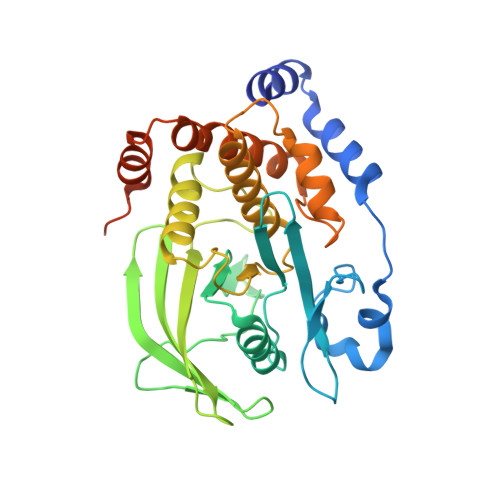Optogenetic Analysis of Allosteric Control in Protein Tyrosine Phosphatases.
Hongdusit, A., Fox, J.M.(2021) Biochemistry 60: 254-258
- PubMed: 33450156
- DOI: https://doi.org/10.1021/acs.biochem.0c00841
- Primary Citation of Related Structures:
7KEN - PubMed Abstract:
Allosteric regulation enables dynamic adjustments to protein function that permit tight control over cellular biochemistry. Discrepancies in the allosteric systems of related proteins can thus reveal important differences in their susceptibilities to influential stimuli (e.g., allosteric ligands, mutations, or post-translational modifications). This study uses an optogenetic actuator as a tool to compare the allosteric systems of two structurally related regulatory proteins: protein tyrosine phosphatase 1B (PTP1B) and T-cell protein tyrosine phosphatase (TCPTP). It begins with an interesting observation: The fusion of a protein light switch to the allosterically influential α7 helix of PTP1B permits optical modulation of its catalytic activity, but a similar fusion to TCPTP does not. A subsequent analysis of different PTP chimeras shows that replacing regions of TCPTP with homologous regions from PTP1B can enhance photocontrol; as TCPTP becomes more "PTP1B-like", its photosensitivity increases. Interestingly, the structural changes required for photocontrol also enhance the sensitivity of TCPTP to other allosteric inputs, notably, an allosteric inhibitor and a newly reported activating mutation. Our findings indicate that the allosteric functionality of the α7 helix of PTP1B is not conserved across the PTP family and highlight residues necessary to transfer this functionality to other PTPs. More broadly, our results suggest that simple gene fusion events can strengthen allosteric communication within individual protein domains and describe an intriguing application for optogenetic actuators as structural probes-a sort of physically disruptive "ratchet"-for studying protein allostery.
- Department of Chemical and Biological Engineering, University of Colorado-Boulder, 3415 Colorado Avenue, Boulder, Colorado 80303, United States.
Organizational Affiliation:
















